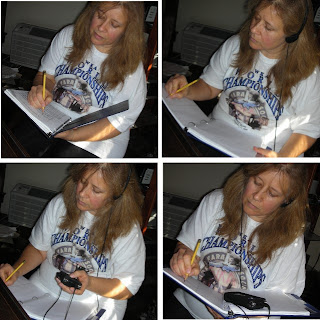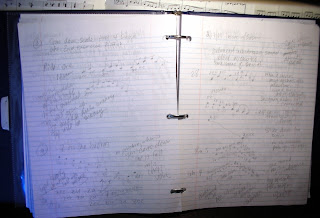In the article, a dance choreographer, inspired by the performance of an actor disabled by cerebral palsy, took on the ambitious task of creating a dance work for him to perform.
In the course of working with him, they both discover that he is able to forge new neural pathways and become aware of his body in a way that opens up his movement. He finds he is able to do things that he had previously told would be impossible for him.
The choreographer, Tamar Rogoff, says that when she began her work with the actor, Greg Mozgala, she knew little about cerebral palsy and that she made a point of not learning too much.
“That way I didn’t have any ideas about what he could and couldn’t do."
This is such a great starting place for a teacher! I think that if there ever was a day I took on the responsibility to try to teach another human how to sing, I would want to approach teaching a person with this wonderful openness of mind and creativity.
It has been so important in my journey as a singer not to settle for what appears to be a limitation that cannot be overcome. A singer with imbalances in the voice might seem to be singing in a "cerebral palsic" way (coining a term here). That singer may not have the natural coordination for balanced singing. Early on, after giving lessons a significant try, a singer such as myself might conclude that she is never going to get this, or it just doesn't happen in her voice.
In the article, Dr. Stephen Paget, chief of rheumatology at the Hospital for Special Surgery in Manhattan, is quoted as saying:
"In the past, people thought that a neurological deficit was fixed and immutable .... “Now there’s this whole concept of neuroplasticity: the neurological system has this ability to change itself and constantly grow."
There are so many vocal tasks that I found completely inaccessible to me over the years. For such a long time, I felt very much like my own vocal deficit was "fixed and immutable." It seemed at times that I might just chalk it up to not having the ability to do it, based on some way my apparatus was constructed by nature or something.
When I would study the way the sounds were produced and the way the vocal cords worked, however, it seemed to me that this vocal task I wanted to accomplished ought to be possible. Yet how would I overcome the sensation of being "fixed?" Every "different" technique I tried seemed to always bring me back to the same old predicament
The biggest example of this was high notes. I would try everything to figure out how someone was singing a high note. For years. There would be a teacher who would tell me that I could sing a high note, and there would be teachers who would get me to make some sounds up there. But I definitely could not repeat some high note noise I made in a lesson on my own.
Once they began working together, though, Ms. Rogoff realized that a broader approach was needed. In the course of figuring out how to assist Mr. Mozgala discover his abilities to open up to movement, Ms. Rogoff describes how:
“Every time he tried to move in a way that wasn’t specific to his habitual pattern, he would fall down or just not know how to address it,” she said, “because he had a certain amount of patterning linked to his C.P., and I was asking him to step out of these patterns. I realized I couldn’t ask him to do that unless I supported it with a lot of body knowledge.”
This description, although one would think was far from my experience learning to sing, was not unlike the way I experienced approaching high notes. I feel that I had a habitual pattern that I simply could not figure out how to address either. Also, though I did not have a condition as pronounced as cerebral palsy, nevertheless my patterns were conditioned and very difficult to overcome as well. I had no idea how to overcome the problem.
At some point, however, after studying the vocal science involved, and first coming to the conclusion that it had to be possible, and then entrenching myself in the belief that because it was possible then I was going to be able to find a way, I started anew, and had to find approaches similar to what Ms. Rogoff did here:
"She introduced Mr. Mozgala to a tension-releasing shaking technique, and it was immediately revelatory."
I don't know exactly what an equivalent of this "shaking technique" would be in singing, but I do know that it points the way to being open to new and less standard ways of exploring every possibility about what might shake up the entrenched pattern in a singer who is stuck in the way I was.
How wonderful would a teacher of voice be who could come up with solutions to students who had trouble , imbalances, or lack of coordination in developing their singing voices, like this choreographer found solutions for an actor with limitations and imbalances and lack of coordination.
Ms. Rogoff said,
“I didn’t know what I was going to do for him,” she said, “but I just knew he was inspiring to me."
If a singer has the passion to learn how to sing, then there can be so much that can be achieved, and the singer should never be written off as someone who is just not going to be able to get it. A good teacher must be inspired when challenges are presented, not dismayed or off put.
In the end, Dr. Paget, the lets us know that for anyone with a neurological impairment, and for the purposes of my comparison here, I transpose to the idea of a "vocal impairment":
“It’s not over,” he said. “There’s always a chance to change. You should not — you dare not — give up.”






